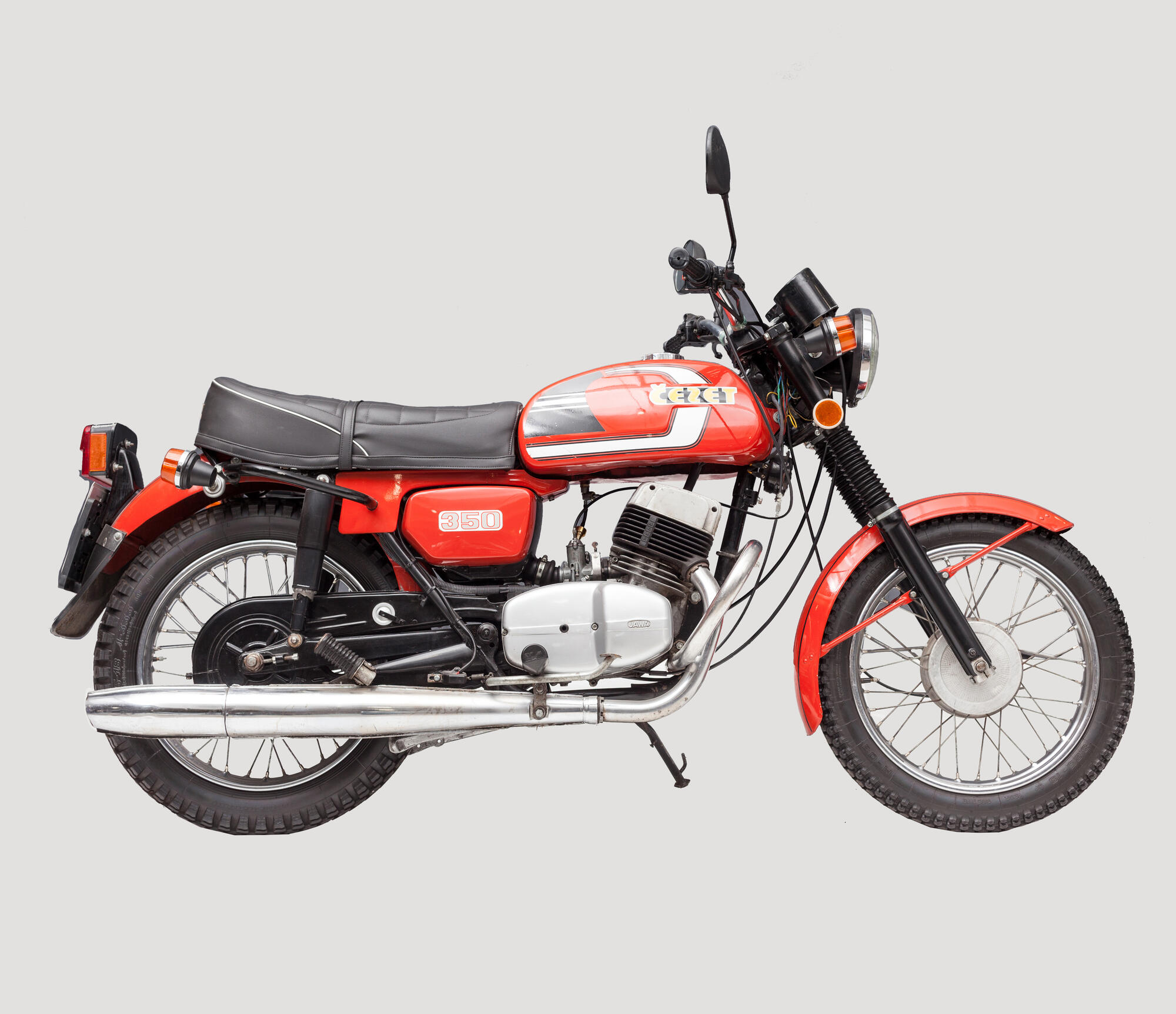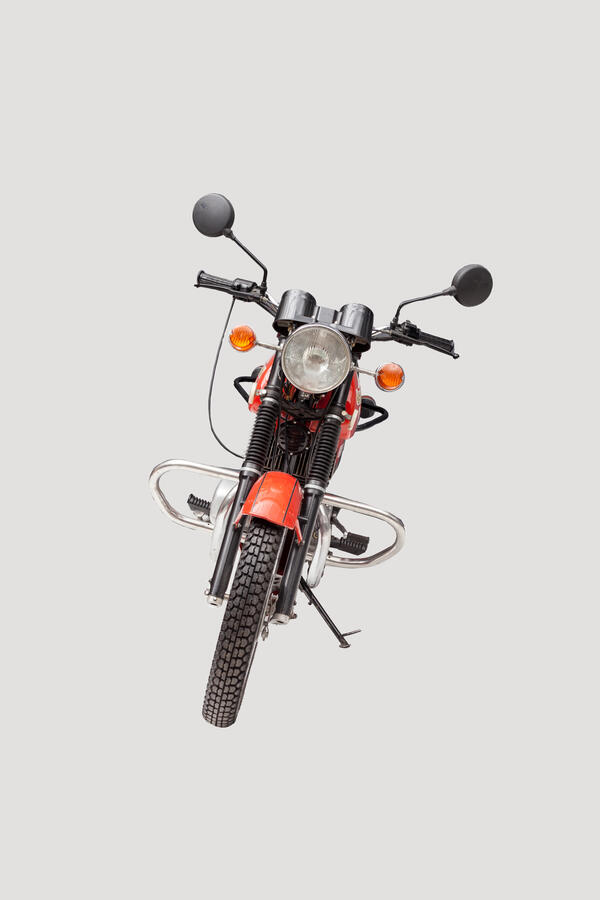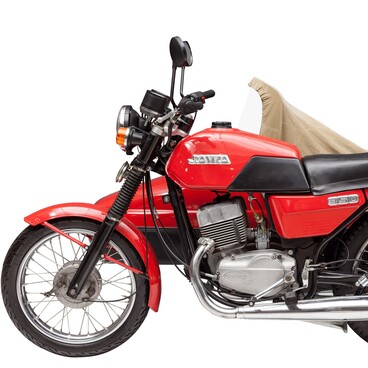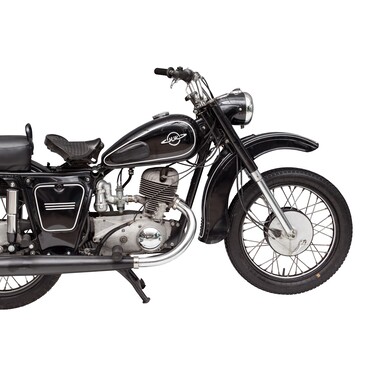The ČZ 350/472.6 motorcycle was produced at the Czech Armament Works between 1986 and 1989. The enterprise was established as an arms manufacturing plant in 1919 and started manufacturing motorcycles in the 1930s. After World War II, firearms production ended.
The machines of this Czechoslovakian motorcycle works were compatible with the equipment of the Jawa motorcycles that were supplied to the Soviet Union and enjoyed popularity. The company became known across the world for its motorcycles, especially motocross bikes.
Standard motorcycles were also in demand. They were sold even at sporting goods stores. Foreign machines were more convenient: the owners spoke about the low levels of noise and vibrations, the softer operation of the control gear, and the high quality of the tachometer and lighting equipment. At the same time, the motorcycle had certain drawbacks: for example, it was designed mostly for smooth roads. Moreover, it ran on the high-octane AI-93 gasoline.
One of the most popular models was the ČZ 350-472.6. It was supplied to the Soviet Union for three years. The motorcycle had the same engine, electrics, and gearbox as the Jawa-350. The aluminum swingarm and the wheels gave the ČZ motorcycle a brighter look.
The ČZ 350/472.6 was developed in close cooperation with the Soviet VNIIMotoprom Motorcycle Institute in Serpukhov to ensure that the motorcycle was adapted to the Soviet conditions and regulations.
In the 472.6 version, the generator power was increased from 75 to 150 W, allowing the designers to install more advanced lighting equipment. The motorcycle had a weight of 156 kg and a maximum carrying capacity of 160 kg. It was equipped with a two-cylinder, two-stroke engine that ran on the fuel/oil mix in a 25:1 ratio, as well as a four-speed manual transmission. The machine could reach a maximum speed of 120 km/h at 23 hp. The fuel consumption was approximately 4.6 liters per 100 km, and the fuel tank had a capacity of 13 liters.
The machines of this Czechoslovakian motorcycle works were compatible with the equipment of the Jawa motorcycles that were supplied to the Soviet Union and enjoyed popularity. The company became known across the world for its motorcycles, especially motocross bikes.
Standard motorcycles were also in demand. They were sold even at sporting goods stores. Foreign machines were more convenient: the owners spoke about the low levels of noise and vibrations, the softer operation of the control gear, and the high quality of the tachometer and lighting equipment. At the same time, the motorcycle had certain drawbacks: for example, it was designed mostly for smooth roads. Moreover, it ran on the high-octane AI-93 gasoline.
One of the most popular models was the ČZ 350-472.6. It was supplied to the Soviet Union for three years. The motorcycle had the same engine, electrics, and gearbox as the Jawa-350. The aluminum swingarm and the wheels gave the ČZ motorcycle a brighter look.
The ČZ 350/472.6 was developed in close cooperation with the Soviet VNIIMotoprom Motorcycle Institute in Serpukhov to ensure that the motorcycle was adapted to the Soviet conditions and regulations.
In the 472.6 version, the generator power was increased from 75 to 150 W, allowing the designers to install more advanced lighting equipment. The motorcycle had a weight of 156 kg and a maximum carrying capacity of 160 kg. It was equipped with a two-cylinder, two-stroke engine that ran on the fuel/oil mix in a 25:1 ratio, as well as a four-speed manual transmission. The machine could reach a maximum speed of 120 km/h at 23 hp. The fuel consumption was approximately 4.6 liters per 100 km, and the fuel tank had a capacity of 13 liters.




